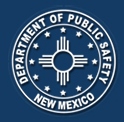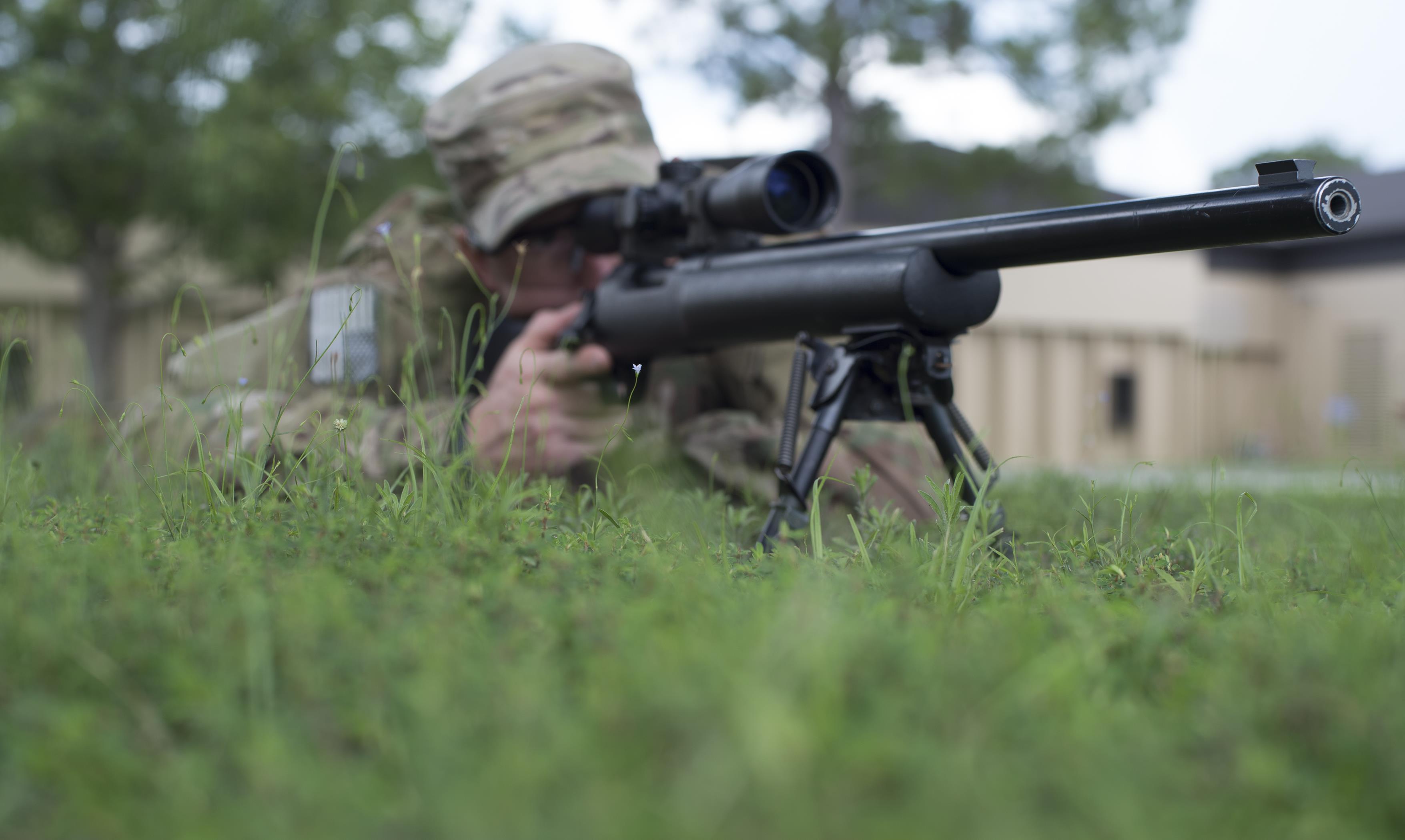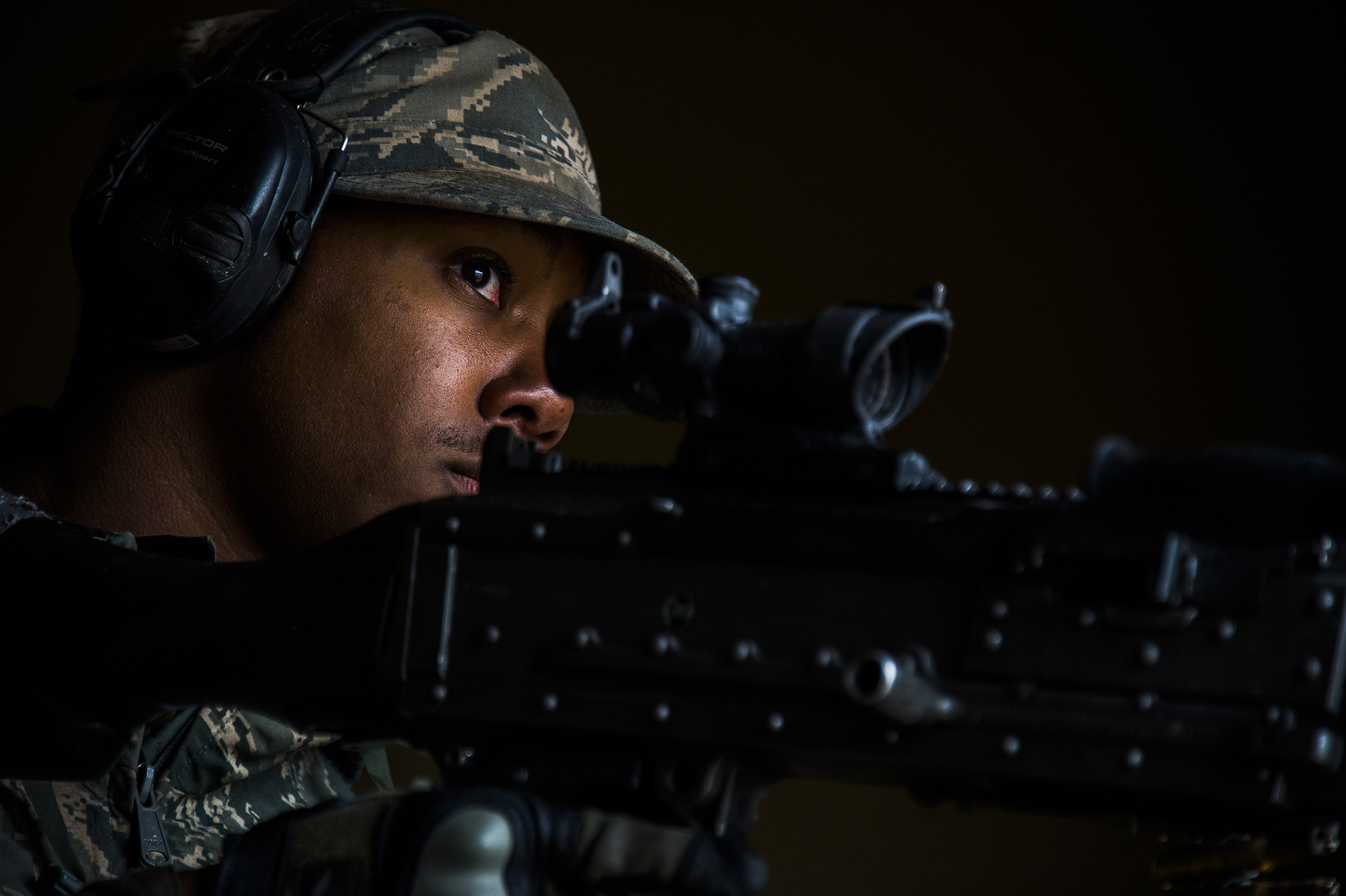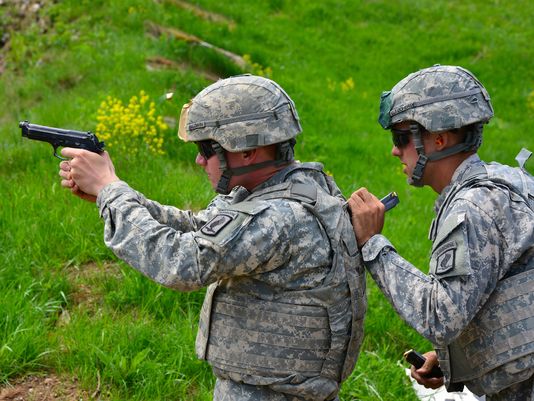
New Rules Pertaining to NM Concealed Handgun Carry Act For Active, Retired and Honorably Discharged Military Personnel (NM House Bill 431, 2015 Legislative Session)
Hello all: The NM Legislature has issued new rules for conceal/carry permits for active duty military and honorably discharged veterans who have separated from the service within 20 years of the application for the conceal/carry license. An application fee or renewal fee is not required for this category nor is a firearms training course or refresher firearms training course. (Normal application fee cost is $100) Firearm training course or refresher course could be another $100 +)
If interested, the path to take is as follows:
- Go to the NMDPS web site and download the conceal carry application form and fill out that form that also includes the Health Release Form (16 question questionnaire): http://www.dps.state.nm.us/wp-content/uploads/2007-CCW-APPLICATION.pdf
- Carry that completed form to the NM DVS office at the intersection of Indian School & San Pedro
NMDPS Concealed Handgun Carry Unit
6301 Indian School Rd NE Ste. 310
Albuquerque, NM 87110
Ph: (505) 841-8053
Office hours: Monday – Friday 8 AM – 5 PM)
Send questions to: This email address is being protected from spambots. You need JavaScript enabled to view it.
Along with your completed application forms you will need one copy of the following:
DD Form 214
NM Drivers License
Birth Certificate
Fingerprints (Registration Receipt For E-Prints)
Note on fingerprints: You can get your prints taken electronically. Cost is $8.30 (Joe Citizen pays $40+).
Go to below listed website for Cogent/3M and complete the registration form. It will request a credit card number. When completing the form you will need the “ORI” number for NM That number is: NM 920272Z which is the code for NM Law Enforcement. Click the box “ORI Look Up” and scroll down the page to the noted number and select that number. It will transfer that number to the form and code you the same as NM law enforcement. When the form is completed and payment made it will display your “NM Applicant Fingerprint Registration Receipt”. Print this receipt. You can also have the receipt e-mailed to you.
You have 90 days to take this receipt to an authorized Cogent site. One of the sites is located on San Mateo at San Mateo & Los Arbolos. There is a sign “FINGERPRINTS” in front. They will take your E-Prints and have them available on file for NM DPS to access. Make sure you take your Registration Receipt with you when you go for fingerprinting since they will need your Registration ID that appears on that form.
Again, here’s the web site for the applicant fingerprint registration: https://goo.gl/PGJFEq
For those with a military service separation date older than 20 years:
In addition to completing the above noted process we are required to take the firearms training course which includes firing 25 rounds with the weapon that will appear on your CC permit. You bring your weapon and ammo.
You will fire at a target at a range of 7 yards
Mike Creedon has contacted a certified CC instructor who is willing to teach a class of up to 12 people at the Del Norte Range on the far West Side of town on August 10 or 11, 2015. He will do a tailored class for our group that should take less than the normal 4 hours. Mike and I intend to take this course. 10 Slots left.
Special note of thanks to Dave Coulie and Mike Creedon for bringing this to our attention. Additionally, Dave states if you need any help with the noted process, give me a call at 293-0996.
Snipers Hone Skills During Royal Air Force Training

Photo: Staff Sgt. Joseph Crotty, the 822d Base Defense Squadron NCO in charge of standards and evaluations, gazes down the sights of his M24 Sniper Weapon System while in the prone position July 2, 2015, at Moody Air Force Base, Ga. Crotty and Senior Airman Phillip Hopkins, the 822d Base Defense Squadron fireteam leader, attended the nine-week Royal Air Force's Basic Sniper Course to develop their knowledge and skills. (U.S. Air Force photo/Staff Sgt. Eric Summers Jr.)
MOODY AIR FORCE BASE, Ga. (AFNS) -- He shivered in below-freezing temperatures, as pouring rain seeped through his muddied uniform. Clouds blanketed the night sky, casting a darkness difficult to defeat. Even with night vision technology, it was hard to see past his rifle.
As his mind wandered to his hunger and lack of sleep, the sniper turned his thoughts back to the mission at hand. Staff Sgt. Joseph Crotty, the 822d Base Defense Squadron NCO in charge of standards and evaluations, would have to stay focused to get through this training.
Crotty and Senior Airman Phillip Hopkins, the 822nd Base Defense Squadron fireteam leader, both endured this scenario and many others during the Royal Air Force's Basic Sniper Course. The intense nine-week training allowed the Airmen, who both have already been through the U.S. Air Force's Sniper Certification Program, to further develop in-depth knowledge of their specialty.
"The RAF sniper school is one of the toughest schools we send Airmen to, but it is not just about shooting," said Col. Michael Ross, the 820th Base Defense Group commander. "It trains endurance, field craft and observation skills, too. Our Airmen deploy to a wide spectrum of environments, many of which require the ability to gather information from covert observation posts located outside the base perimeter. The RAF sniper course is a phenomenal venue to sharpen the skills needed to accomplish that mission."
Ross said that the course was grueling in both the mental and physical aspects of training, and Hopkins agreed.
"It was a very arduous course," Hopkins said. "It's probably one of the hardest things I've done in my life, but it's also the best training I've done in my life. They expand upon (what we already knew) and broke it down to where we really got into detail with what we were doing. Everything we did was so minute and everything you learn is just brilliant."
Many people may believe that a sniper training course would focus on expertly firing a weapon, but RAF's sniper course went far beyond that, teaching an array of skills to the Airmen.
"Everybody says it's all about the shooting," Crotty said. "But that's a very cliché, one-sided way of thinking about what we do. They don't see the training that we get to observe and pick out the little things."
Hopkins said the snipers learned to act as force multipliers on the battlefield by observing from afar without being detected and relaying that information to their team.
"I can see what (the enemy) is doing before they complete their task. I know what they're going to do before they do it. I can be anywhere and they're not going to know I'm there." Hopkins said.
In order to hone their intelligence gathering and observational skills, the pair learned land navigation, map and photograph reading, stalking, camouflage and concealment over the weeks.
"You learn so much at the school," Hopkins said. "Essentially, it made me a better observer and reconnaissance expert so I can bring those skills wherever we go. I have a different view of things now, so it changes my perspective."
Crotty and Hopkins are two of the few Americans to further their sniper proficiency through the basic sniper course.
"It's pretty rare," Crotty said. "It's definitely a once-in-a-lifetime opportunity, and two of us from the 820th (BDG) got to go."
Crotty and Hopkins went back to their respective squadrons with a wealth of knowledge they were able to share with fellow Airmen. Sharing ideas, techniques and perspectives is part of how close precision engagement is learned.
"When our Airmen come back from that course, they also bring with them another perspective on how to do the job we do ... base defense," Ross said. "They share this other way of looking at things with the rest of the group, improving the tools we need when we deploy."
The pair expects to continue the cycle of learning and teaching that is characteristic of their career.
"It is a continuing trade," Crotty said. "You never get enough training when it comes to long-range precision rifle fire. I've been consistently honing my skills from new people and every year accomplish the tasks to maintain my certification."
Even if his training as a sniper is never done, Hopkins said he believes attending the basic sniper course will remain a highlight of his time on active duty.
"As far as training goes, it's the best training I've had in my career and it'll probably be one of the pinnacles of my Air Force career," Hopkins said.
According to Ross, the bottom line is that they get the best training possible for the 820th BDG Airmen to protect the Air Force's people and assets better than anyone on the planet.
Posted/Updated 6/12/2015
by Tech. Sgt. Matthew Hannen
621 Contingency Response Wing Public Affairs, Travis AFB CA

Photo: Senior Airman Vidarion McDaniel, a security forces airman for the 570th Global Mobility Readiness Squadron from Travis Air Force Base, Calif., waits to shoot during an attack scenario on a missile convoy while working as opposing forces against the 91st Missile Wing, assigned to Minot Air Force Base, N.D., during Operation Road Warrior at Camp Guernsey, Wyo., May 19, 2015. Operation Road Warrior, the largest security forces exercise conducted each year, is an Air Force Global Strike Command exercise held annually at Camp Guernsey, Wyo., which evaluates tactics, techniques, and procedures used to secure nuclear–capable weapons and critical intercontinental ballistic missile (ICBM) components during convoy operations and provided direct feedback to the three participating ICBM wings; the 91st Missile Wing, assigned to Minot AFB, N.D., 90th Missile Wing assigned to F.E. Warren AFB, Wyo., and 341st Missile Wing assigned to Malmstrom AFB, Mont.. (U.S. Air Force photos by Tech. Sgt. Matthew Hannen)
6/12/2015 - CAMP GUERNSEY, Wyo. -- Operation Road Warrior is an Air Force Global Strike Command (AFGSC) exercise held annually at Camp Guernsey, Wyo., the largest security forces exercise conducted each year. For this year's exercise AFGSC asked the 570th and 571st Global Mobility Readiness Squadrons (GMRS), from Travis Air Force Base, Calif., to provide 24 Security Forces Airmen from their force protection flights to act as oppositional forces (OPFOR), April 23-May 20.
According to Staff Sgt. Samuel Saintz, course lead for Road Warrior and Convoy course with the 620th Ground Combat Training Squadron , "We wanted to bring in an outside unit (570th & 571st GMRS) here so the convoy teams from each unit can get a realistic look at the adversary they might face based on team composition and training. In the past we would do the training ourselves."
The exercise evaluated tactics, techniques, and procedures used to secure nuclear -capable weapons and critical inter-continental ballistic missile (ICBM) components during convoy operations and provided direct feedback to the three participating ICBM wings; the 91st Missile Wing, assigned to Minot AFB, N.D., 90th Missile Wing assigned to F.E. Warren AFB, Wyo., and 341st Missile Wing assigned to Malmstrom AFB, Mont.. The 620th GCTS, located at Camp Guernsey, provided the cadre, logistics, and all other support functions in order to host this operation.
"This is the first time they've brought in an outside agency to be the OPFOR," said Capt. Jordan Criss, the 570th GMRS force protection operations officer. "They (AFGSC) wanted to see a more realistic and unbiased oppositional force that could truly test the capabilities of our missile defenders.
"We were extremely excited to fill that role as well because it helped us hone our tactics and provided us another opportunity to train on a wide spectrum of war fighting skills like operations planning, weapons deployment, and shoot, move, and communicate tactics."
According to Senior Airman Brian Gill, a 570th GMRS force protection radio telephone operator, This has been an eye-opening experience that has made the airmen more well-rounded defenders."
"I have never been on this side of the training," Gill said. "Everybody is always trying to attack us, but it is the first time we have actually been able to come up with our own operation plan and how we are going to execute and be able to attack them. This is not something you usually get to do in your career. This a first time for me being able to be on the OPFOR side instead of the friendly blue force side, it gives you a different perspective."
"The teams (Minot AFB, Malmstrom AFB, and F.E. Warren) enjoyed having an OPFOR that were trained better than they were," Saintz said. "They got a realistic look at what they might face one day. They (570st and 571st GMRS) came here, they were all fully trained and highly motivated so it was very easy. We just gave them pretty much what we were looking for and they went out and did some reconnaissance and executed exactly the way we wanted them to."
According to Criss, The safety and security of our nation's most critical assets is a responsibility that the Air Force is charged with and continuously makes strides to improve.
"This was an outside of the box solution that started merely as a suggestion during a staff meeting and flourished into a future standard that will be used for years to come," Criss said. "Overall, this was an experience that greatly improved the capabilities across the Air Force by merging the expertise of two completely different Major Commands, (Air Mobility Command and Air Force Global Strike Command) to provide a product that directly impacted our nation's strategic ICBM deterrence."
The 620th GCTS plans on requesting support from the CRW for next year and other exercises as well.
Armed Forces to Protect and Serve in NC
Defense Video & Imagery Distribution System
North Carolina National Guard
Story by Sgt. Leticia Samuels

North Carolina Gov. Pat McCrory signs House Bill 595 into law at the Capitol building in Raleigh, June 3, 2015. The new law recognizes experience as military police officers for the purpose of law enforcement certification and increases the size of the North Carolina Criminal Justice Education and Training Standards Commission.
RALEIGH, N.C. - North Carolina Governor Pat McCrory signs Representative Chris Whitmire's House Bill 595 into law, providing Soldiers, Airmen, Sailors, Marines, and Coast Guardsmen with military police experience to transition into law enforcement, at the Capitol building here, June 3, 2015.
This act recognizes experience as military police officers for the purpose of law enforcement certification and also increases the size of the North Carolina Criminal Justice Education and Training Standards Commission.
"North Carolina is on its way to becoming the most veteran-friendly state in the nation," said McCrory.
Bill 595 allows fully qualified military police officers who have been honorably discharged from service to apply for this process and fall into one of two accelerated programs. In the first, the Commission requires applicants to complete its 96 hour Legal Unit, 24 hours of Civil Process, all background and psychological checks, and accomplish the state Basic Law Enforcement Test Evaluation. These requirements can be accomplished before employment or during a one year probationary certification.
Applicants will also have to have been awarded a military police occupational specialty rating and been fully qualified, performed a minimum of two years of military police duties within five years of application, meet all standards for law enforcement, and possess combined training and experience that meet or exceed expectations needed for employment as a law enforcement officer.
Service members who do not possess enough combined training and experience are required to complete a more extensive program to include all requirements deemed for members with experience and any supplementary high-liability training, as deemed necessary by the Commission, not to exceed 180 hours. Individuals in this category must complete these requirements first and are not eligible for the one year probationary period of employment.
The North Carolina Criminal Justice Education and Training Standards Commission comprised of 31 members has increased to 34 members to include police chiefs, police and correctional officers and the Director of the State Bureau of Investigation, and the Commander of the State Highway Patrol along with various other North Carolina officials that aim to strengthen the state law enforcement workforce.
"This law will make it easier for our veterans to provide here in our local communities the same safety and security they proudly provided for our country," said McCrory.
NOTE: Special note of thanks to AFSFA member and Rockingham County Sheriff Sam Page for bringing the effort and results to light. Well done Sam!!

Army Restarts Road to Replacing M9 Pistol
Army Time Staff report 3:07 p.m. EDT June 17, 2015
(Photo: Davide Dalla Massara/Training Support Activity Europe)
The Army recently released a second draft solicitation on the requirements for its next pistol, a step toward a final request for proposals — one that was scheduled to reach gun-makers in January.
Changes to the requirements for the XM17 Modular Handgun System were made "as a result of industry feedback and [the Defense Department's] decision to allow use of special purpose ammunition," Program Executive Office Soldier officials announced in a Wednesday news release.
The new requirements were not immediately available, but they're likely to change: The draft is designed to allow manufacturers "a final opportunity to review and provide feedback on the Army's refined strategy," the release stated. An industry day, the fourth connected to the handgun project, will be held July 7-8 at New Jersey's Picatinny Arsenal to allow additional feedback.
Officials plan to unveil the final solicitation in 2016,which was scheduled for Jan. 2 of this year but was delayed to accommodate industry feedback. The new draft went out June 8 at FedBizOpps.gov.
If the new schedule holds, three versions will be tested through 2016 and 2017 before a single manufacturer is selected to produce about a half-million handguns, the release says — 280,000 for the Army, 212,000 for other services, and another 7,000 compact versions for soldiers. Full-rate production would begin in 2018.
"The XM17 will provide Warfighters with greater accuracy, target acquisition [and] ergonomic design," Col. Scott Armstrong, program manager for Solder Weapons, said in the release. "The new handgun will also be more reliable, durable and easier to maintain."
Vendors are asked to submit questions on the draft by June 28, according to the FedBizOpps posting.
The M9 Beretta has been the Army's pistol of choice since 1985. Beretta offered an M9A3 variant, with an adjustable handle and accessory rail, among other improvements, as a possible upgrade, but the Army rejected the suggestion.
Army officials have said the new handgun system solicitation will include more than the pistol itself, with changes to ammunition, holsters and accessories under consideration. All calibers will be considered in the competition, which could result in a larger bullet than the current 9mm round.
Page 8 of 14


